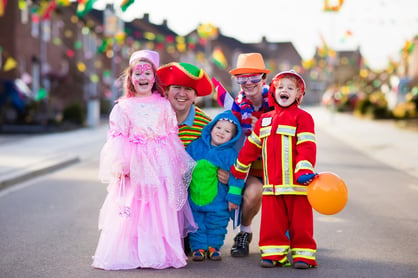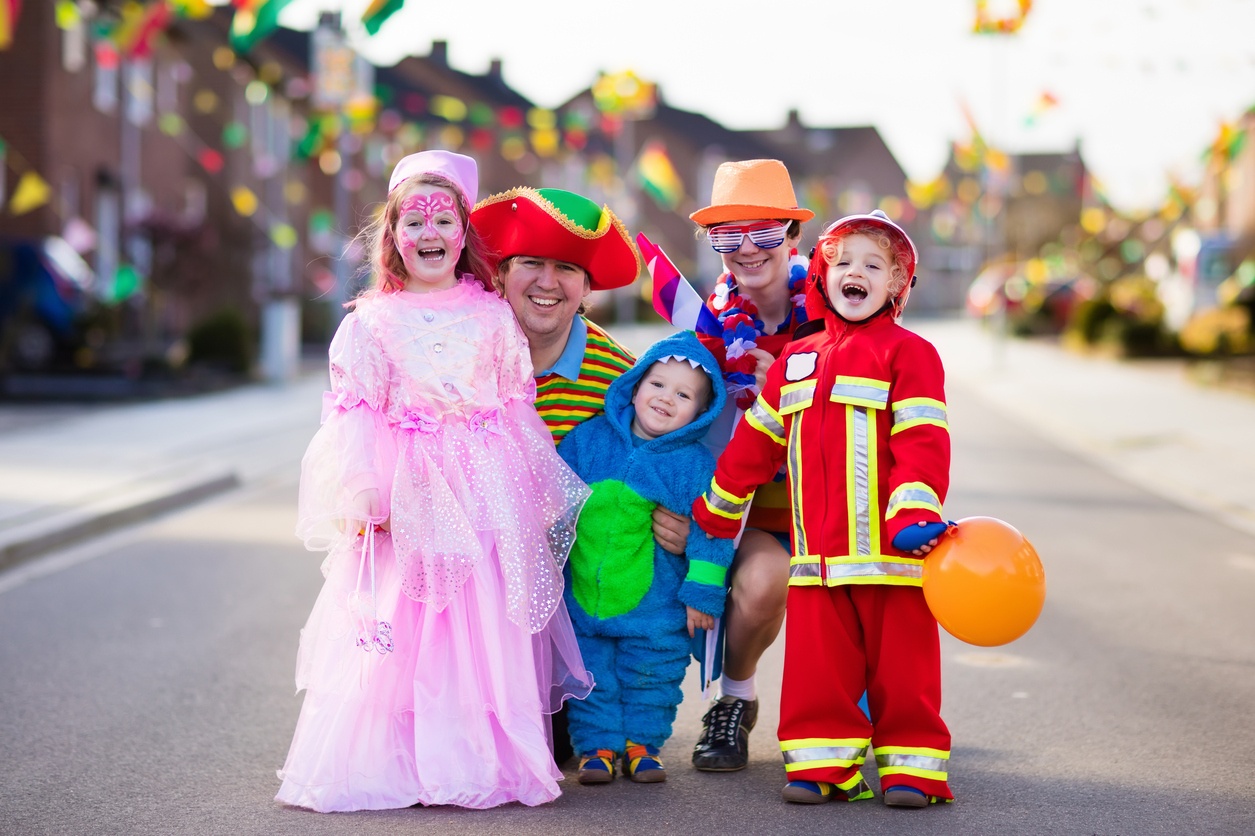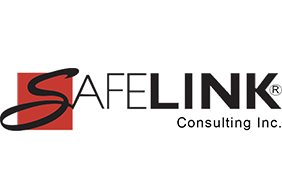
U.S. pedestrian fatalities is the highest in 26 years according to the National Highway Traffic Safety Administration (NHTSA). On average, a pedestrian was killed nearly every 1.5 hours in traffic crashes in 2016.
The National Center for Health Statistics estimates 7,330 pedestrians died in traffic or non-traffic incidents in 2016. Non-traffic incidents occur on non-traffic ways such as driveways, parking lots or other private property. The National Highway Traffic Safety Administration (NHTSA) estimates 5,987 pedestrians died in traffic crashes occurring on public roads. NHTSA reports that in 2016 most pedestrian traffic deaths occurred in urban settings (72%), on the open road (70%) vs. intersections (18%), and at night (74%). The largest number of pedestrian deaths occur on Saturdays (1,036) and the majority of these deaths happen at night (806).
Distracted walking incidents are on the rise, and everyone with a cell phone is at risk. According to a Governors Highway Safety Association report, nearly 6,000 pedestrians were struck and killed by motor vehicles in 2017. Walking without paying proper attention to our surroundings can put everyone’s safety at risk, and no age group is immune. The National Safety Council is committed to eliminating preventable injuries caused by distraction to both drivers and pedestrians.
During the popular Halloween season pedestrian safety is a real issue for trick-or-treaters and drivers alike. Pedestrians and drivers both need to be extra cautious on the roads. Here are some driver and pedestrian safety tips that we have researched from various sources. Keep these in mind while trick-or-treating this year:
Drivers:
⇒ Look for pedestrians everywhere. Pedestrians may not be walking where they should be or may be hard to see— especially in poorly lit conditions, including dusk/dawn/night and poor weather.
⇒ Always stop for pedestrians in the crosswalk or where pedestrian crosswalk signs are posted.
⇒ Never pass vehicles stopped at a crosswalk. They may be stopped to allow pedestrians to cross the street.
⇒ Slow down and look for pedestrians. Be prepared to stop when turning or otherwise entering a crosswalk.
⇒ Follow the speed limit; slow down around pedestrians.
⇒ Stay focused and slow down where children may be present, like school zones and neighborhoods.
⇒ Enter and exit driveways slowly.
⇒ Watch for children who may dart out into the street. Expect the unexpected. Remember that excited children are hard to control.
⇒ If you are driving children around for trick or treating, make sure they are buckled up in a child safety seat or vehicle seatbelt.
⇒ Pull over to safe locations to let children exit curb side, away from traffic. Use your hazards to alert other drivers of your car.
⇒ Remember that as soon as you step out of your car, you become a pedestrian.
⇒ Be aware of stopped cars that may be loading or unloading passengers.
⇒ Eliminate Distraction by not using a cell phone or other mobile device while driving. It is far too dangerous to drive on Halloween to add further, unnecessary risks. Pull over safely to check voice messages, or texts, as needed.
⇒ Once it becomes dark be sure to look out for trick-or-treaters in dark costumes or dark clothing.
⇒ Popular trick-or-treating hours are 5:30 p.m. to 9:30 p.m. so be especially alert for kids during those hours.
⇒ Slow down in areas where pedestrians are likely to be or where sight distances are limited. Keep your windshield clean.
⇒ Never drive under the influence of alcohol and/or drugs. Make plans to have a DD or use a taxi or driver service such as Uber to get around town. If you see a drunk driver or impaired pedestrian on the road, contact local law enforcement.
Trick-or-Treaters and other Pedestrians:
⇒ Be cautious night and day when sharing the road with vehicles. Never assume a driver sees you (he or she could be distracted, under the influence of alcohol and/or drugs, or just not see you). Make eye contact with drivers as they approach.
⇒ Cross the street at corners, using traffic signals and crosswalks. Make sure traffic has stopped or passed before you step into the street. Tell children to make eye contact with drivers before crossing in front of them.
⇒ Look left, right and left again when crossing and keep looking as you cross.
⇒ Stay off phones and other electronic devices and keep head up while walking.
⇒ Always walk on sidewalks or paths. If there are no sidewalks, walk facing traffic as far to the left as possible. Children should walk on direct routes with the fewest street crossings.
⇒ Watch for cars that are turning or backing up. Teach children to never dart out into the street or cross between parked cars.
⇒ Children 12 and under should be accompanied by an adult.
⇒ Children should travel only in familiar, well-lit areas and avoid trick-or-treating alone.
⇒ Tell your children not to eat any treats until they return home.
⇒ Children should never enter a stranger's home.
⇒ Costumes should not obscure vision or present a trip hazard.
⇒ Make sure you are visible to motorists, especially at night by carrying a flashlight on the side closest to trafic. Make sure any dark clothing is offset by reflective tape or wear a small flashing strobe light. Bright colored clothing is not enough.
⇒ Before the Halloween festivities begin, plan a way to get home safely at the end of the night. Alcohol affects judgment, balance, and reaction time. Create a “buddy system” to get each other home safely. Call a cab or your community’s Sober Ride program, take public transportation, or use NHTSA's SaferRide app to help you call a sober friend or family member to pick you up. Walking impaired can be just as dangerous as drunk driving.
Follow these safety tips to ensure that you and your family have a safe and fun Halloween.
Do you have workers that drive for your business? Whether employees drive daily or periodically for your business, they must take a Driver Safety Training course to assist in meeting OSHA training requirements. Get online driver training here for employees:
Employee Driver Safety Training - General Industry online course
Employee - Charting a Course for Safety Success Dental Lab Driver Training
Employer Training - The Overlooked Risk: Dental Lab Pickup and Delivery Workers.
Learn more about what SafeLink Consulting can do to help your business with compliance services, including safety compliance, to meet OSHA training requirements and quality system consulting to meet FDA compliance. SafeLink Consulting assists businesses with workplace safety training, infection control training, HIPAA training online, quality systems, assessments, audits, due diligence, and more.
Industries include:
Dentistry compliance - assisting the dental practice with meeting requirements for OSHA, HIPAA, EPA, and CDC guidelines, patient safety and employee health & safety
Dental Laboratory compliance - assisting the dental lab with meeting requirements for OSHA, FDA, and CDC guidelines, employee health & safety, plus FDA requirements for lab manufacturing custom implant abutment /gmp for medical device manufacturers
Medical Device Manufacturers compliance - assisting with meeting OSHA compliance & FDA requirements, GMP - good manufacturing practices
General Industry compliance - assisting with OSHA compliance and FDA compliance as it pertains to the specific business
Beverage Industry compliance - assisting beverage businesses such as the craft brewery, winery, cidery, distillery, vintner with meeting OSHA compliance, health & safety, FDA requirements / GMP - Good Manufacturing Practices.








Leave Comment